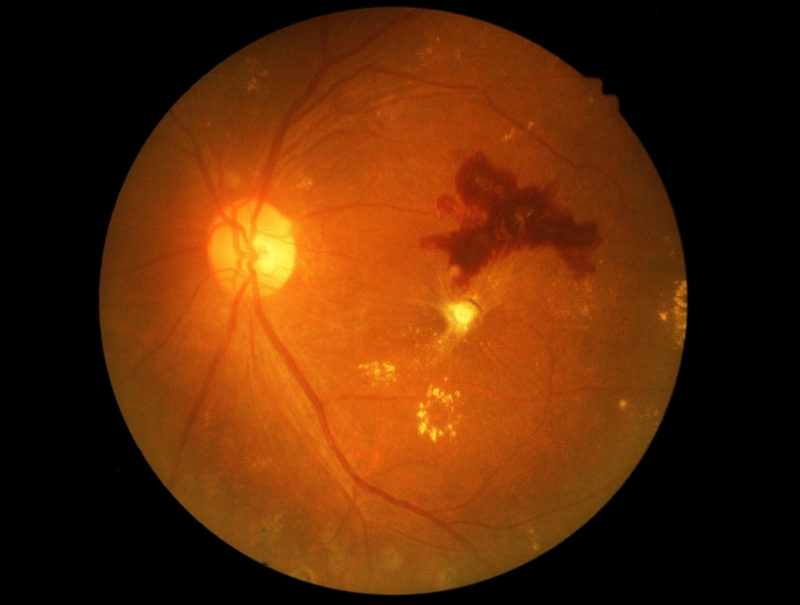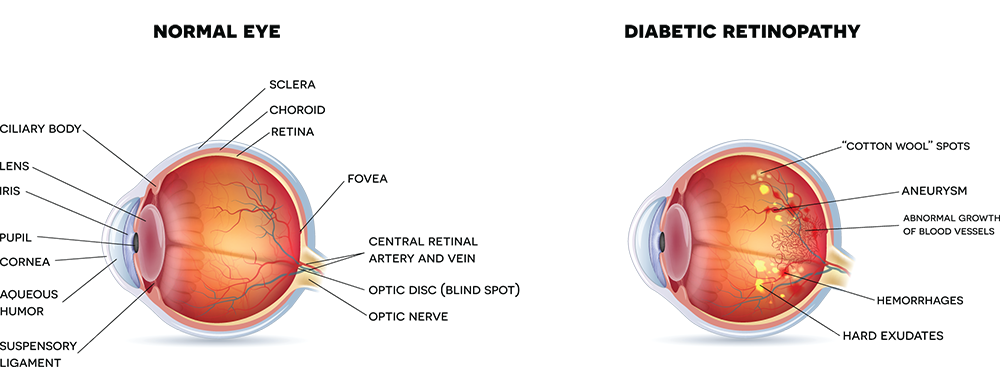Diabetic Retinopathy
Diabetic retinopathy is a complication of diabetes that affects the eyes. The length of time a person has diabetes determines his or her likelihood of developing diabetic retinopathy. It is the most common diabetic eye complication, and a leading cause of blindness in American adults. Diabetic retinopathy causes the blood vessels that supply nourishment to the retina, the light-sensitive lining in the back of the eye where vision is focused, to weaken, swell and leak, causing a loss of vision.
Symptoms Of Diabetic Retinopathy

Patients who develop diabetic retinopathy may not, at first, notice any changes to their vision. In its earliest stages, the condition causes tiny areas of swelling in the small blood vessels of the retina.
Once symptoms are present, they include the following:
- Blurred or double vision
- Seeing flashing lights, blank spots or dark floaters
- Pain or pressure in either or both eyes
- Problems with peripheral vision
In its advanced stages, diabetic retinopathy can cause irreversible blindness.
During any stage of diabetic retinopathy, a condition known as macular edema can develop. Macular edema is the buildup of fluid in the macula, the light-sensitive part of the retina that allows objects to be seen with great detail. As the macula swells, vision becomes blurred. About half of the people with proliferative retinopathy (the most advanced stage) are diagnosed with macular edema.
Reducing The Risk Of Diabetic Retinopathy
A patient with diabetes should have an annual comprehensive dilated-eye exam. In the United States, more than 40 percent of diabetics have some form of diabetic retinopathy.
The risks of developing diabetic retinopathy can be minimized by doing the following:
- Monitoring changes in vision
- Keeping blood-glucose levels low
- Monitoring and managing blood pressure
- Eating a healthy diet
- Participating in a regular exercise routine
- Monitoring and managing cholesterol levels
Patients with proliferative retinopathy can reduce their risk of blindness by 95 percent by keeping up with medical examinations, and promptly getting necessary treatment.



